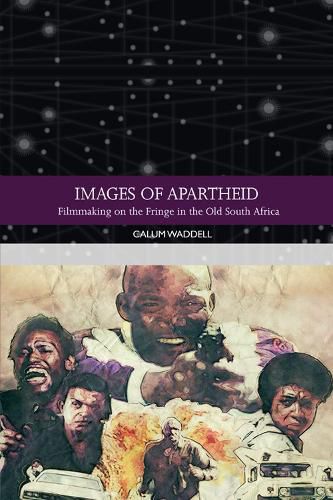Readings Newsletter
Become a Readings Member to make your shopping experience even easier.
Sign in or sign up for free!
You’re not far away from qualifying for FREE standard shipping within Australia
You’ve qualified for FREE standard shipping within Australia
The cart is loading…






Images of Apartheid: Filmmaking on the Fringe in the Old South Africa is an exploration of the low budget, black-action cinema that emerged in South Africa during the 1970s and led to subsequent gangster and race-conflict films that defined an era of prolific genre activity, from Joe Bullet (1973) to American Ninja 4 (1990). Contextualising and documenting the cheap, government-funded ‘B-Scheme’ films, largely unseen since the fall of the National Party, but also acknowledging the impact of international co-productions such as The Wild Geese (1978) and locally made provocation, including the classic Mapantsula (1988), this study is an exhaustive tour of race-representation and state-subsidised subversion. Also discussing the political turbulence of the era, Images of Apartheid argues that so-called ‘ZAxploitation’ should be considered within both localised and wider international paracinematic networks of genre adaptation, resulting in the identification of a uniquely South African form of trash and treasure, and schlock and awe.
$9.00 standard shipping within Australia
FREE standard shipping within Australia for orders over $100.00
Express & International shipping calculated at checkout
Images of Apartheid: Filmmaking on the Fringe in the Old South Africa is an exploration of the low budget, black-action cinema that emerged in South Africa during the 1970s and led to subsequent gangster and race-conflict films that defined an era of prolific genre activity, from Joe Bullet (1973) to American Ninja 4 (1990). Contextualising and documenting the cheap, government-funded ‘B-Scheme’ films, largely unseen since the fall of the National Party, but also acknowledging the impact of international co-productions such as The Wild Geese (1978) and locally made provocation, including the classic Mapantsula (1988), this study is an exhaustive tour of race-representation and state-subsidised subversion. Also discussing the political turbulence of the era, Images of Apartheid argues that so-called ‘ZAxploitation’ should be considered within both localised and wider international paracinematic networks of genre adaptation, resulting in the identification of a uniquely South African form of trash and treasure, and schlock and awe.